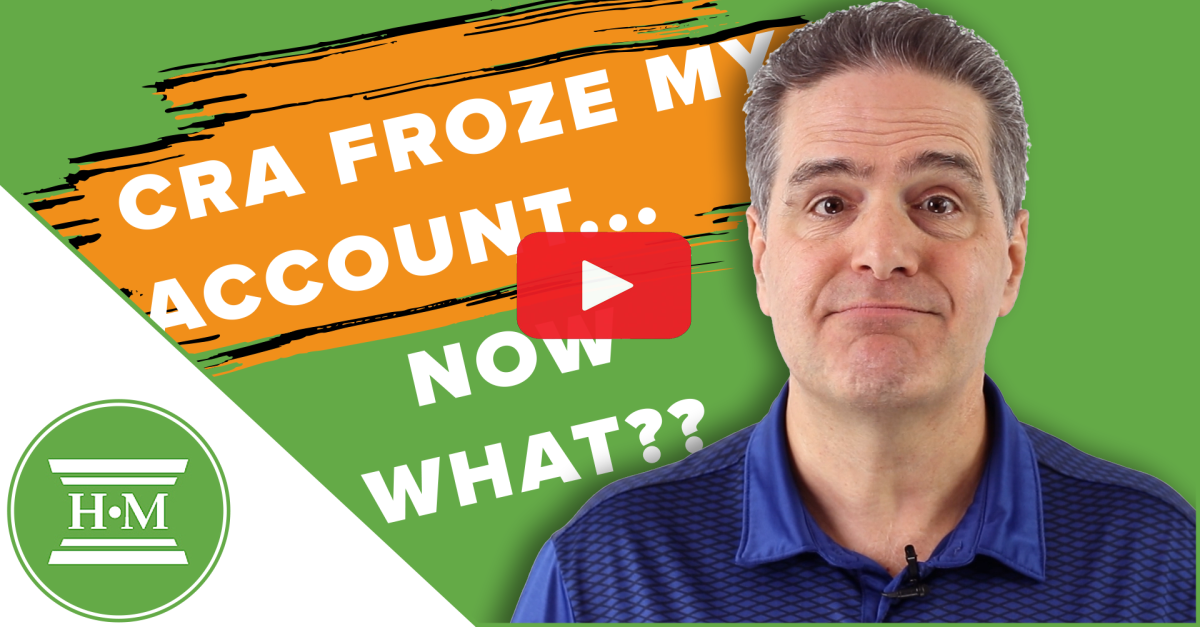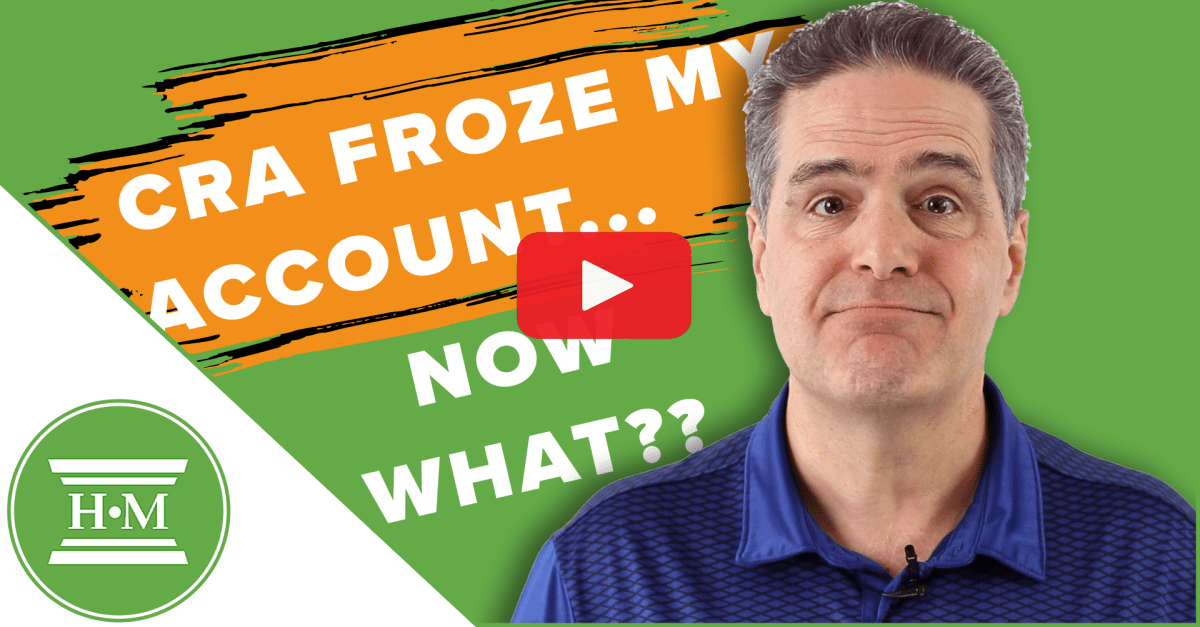
You owe taxes to the Canada Revenue Agency (CRA) and haven’t been able to make payment arrangements. One of the collection rights available to the CRA under the Income Tax Act is the ability to freeze bank accounts. This can be the start of serious financial problems, leaving you scrambling to cover daily expenses and potentially facing late fees, credit score damage, and other consequences.
Here’s what you need to know to get CRA to lift a freeze on your bank account.
Table of Contents
When Can CRA Freeze Your Account
The CRA can freeze your bank account when you have unpaid taxes. CRA will send multiple notices reminding you that you owe money. If you fail to make payments or ignore these notices, the CRA can take more aggressive measures without going to court or notifying you in advance of legal action.
The process begins with a Requirement to Pay, a legal notice issued by the CRA that directs your financial institution to freeze the account and forward any money up to the amount of your tax debt directly to the CRA.
What Happens When Your Account is Frozen
When your account is frozen:
-
Your bank must comply with the Requirement to Pay and send funds to the CRA up to the amount of the debt.
-
Future deposits can also be frozen and sent to the CRA.
-
The CRA may also issue a garnishment order, requiring your employer to redirect a portion of your paycheque directly to CRA.
-
You will be unable to access your account until your tax problems are resolved.
-
This continues until the tax debt is paid or the bank receives legal notification to stop.
The freeze can remain in effect indefinitely until your outstanding balance is paid in full. The longer your account remains frozen, the more precarious your financial situation may become.
How Long Will CRA Freeze My Account?
The CRA can keep your account frozen indefinitely until your outstanding balance is paid in full or you file a consumer proposal or bankruptcy. The CRA has significant powers when it comes to collecting debts, and they may continue to take action until the debt is settled.
How to Resolve a Frozen Bank Account

1. Open a New Account
The first step in managing your finances when the CRA freezes your account is to open a new bank account at a different bank. This will give you immediate access to banking services for your day-to-day needs. Once you’ve opened the new chequing account, update all your direct deposits and automatic payments to use this new account. This includes your payroll, pension, or any other regular income sources, as well as bill payments and other financial obligations. Use this new account for all your living expenses until the situation with the CRA is resolved. This strategy ensures you can continue to manage your finances while you work on addressing the tax debt issue.
2. Make Payment Arrangements with the CRA
If you can repay your tax arrears in full, the next step is to contact the CRA to discuss a payment plan. The CRA may be willing to accept a repayment plan if you show a genuine effort to resolve your tax debt. Be prepared to propose an installment plan that fits your financial situation. They will request detailed financial information about your income, expenses, assets, and liabilities to assess your proposal for debt repayment.
If you disagree with the CRA’s assessment or actions, you can file a formal objection within 90 days of the assessment date. If the objection is denied, you can appeal to the Tax Court of Canada. Consider seeking professional help from a tax lawyer or accountant for complex cases.
3. Consider a Consumer Proposal
If negotiating directly with the CRA isn’t a workable solution, consider filing a consumer proposal.
A consumer proposal is a formal, legally binding process that can help Canadian taxpayers settle debts, including tax debts owed to the CRA, for less than they owe. One of the key benefits of a consumer proposal is that it provides a stay of proceedings, which means it immediately stops all CRA collection actions, including the freeze on your bank account.
To explore this option, you’ll need to work with a Licensed Insolvency Trustee who can assess your situation and help you determine whether a consumer proposal is the right choice.
4. Consider Bankruptcy
In more severe financial situations, bankruptcy might be the best solution.
Like a consumer proposal, bankruptcy is a legal process that can discharge many types of debts, including tax debts owed to the CRA. It also provides an immediate stay of proceedings, stopping all CRA collection actions. However, bankruptcy has more serious and long-lasting consequences than a consumer proposal. It will impact your credit score and may require you to surrender certain assets. Despite these drawbacks, in some situations, bankruptcy may be the best or only option to resolve overwhelming debt, including tax debt.
Get A Personalized Debt Free Plan
"*" indicates required fields
Some Other Things You May Need to Know
Can CRA freeze joint bank accounts?
When the CRA seeks to collect unpaid taxes, they send a document called a Requirement to Pay Notice to the taxpayer’s bank, and this can include a joint account. This notice includes the taxpayer’s name, Social Insurance Number (SIN), and the amount owed.
It is up to the financial institution to decide whether to comply with this order. Due to the co-mingled nature of money in a joint account, it’s hard to determine who the source of the funds in the account was. Depending on the bank’s policies, they may choose to garnish the account and send money to the CRA or may simply freeze the account from any transactions pending determination. Either way, your joint account is frozen and your access lost or restricted.
Can CRA seize my RRSP & TFSA?
Registered investments like an RRSP or TFSA are treated differently than funds held in a bank account. CRA can send a Requirement to Pay to the institution where your investments are held. The investments are not immediately liquidated and sent to CRA. However, the funds will be sent to CRA if you attempt to voluntarily redeem the investment.
Can CRA take my child tax benefit now called the Canada Child Benefit?
The CRA generally won’t seize your Canada Child Benefit to collect on a tax debt. However, money deposited to a bank account can be seized from the account if it is frozen by a Requirement to Pay from CRA. If you have an overpayment from the Canada Child Benefit, the CRA can apply your current benefit payments to the previous overpayment.
Seek Professional Advice
If you cannot make arrangements with the CRA to repay your tax obligation and have them voluntarily remove the hold on your bank account, it’s time to talk to a Licensed Insolvency Trustee about your options.
A tax lawyer cannot help you unfreeze an account unless the CRA agrees. This will require that you repay the full amount of taxes owing (assuming you are not disputing the assessment). The only way to get tax debt relief is to file bankruptcy or consumer proposal with a Licensed Insolvency Trustee.
Don’t let a frozen bank account derail your financial future. Contact Hoyes Michalos today to explore your debt relief options and take the first step towards regaining control of your finances.





